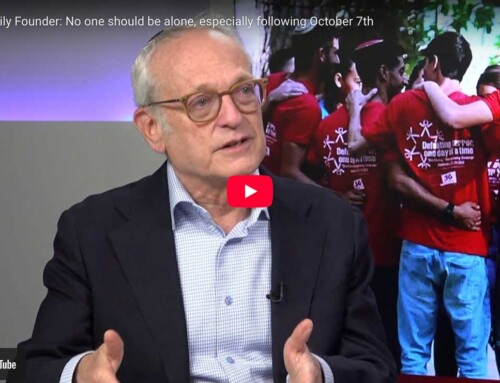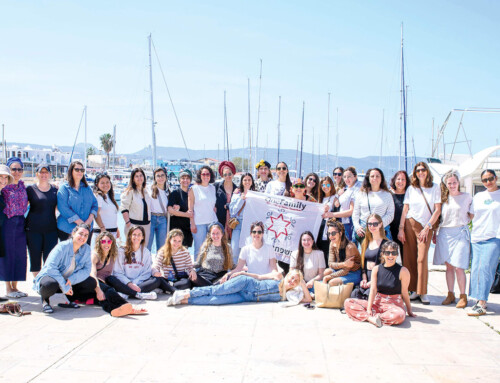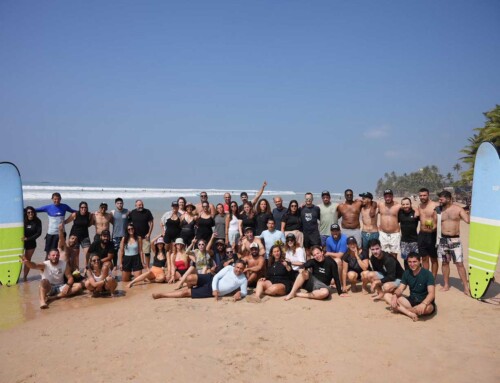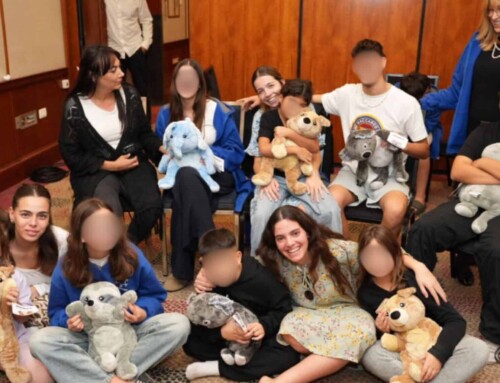Original source: Article published in The Jewish Press – by, Rhona Lewis
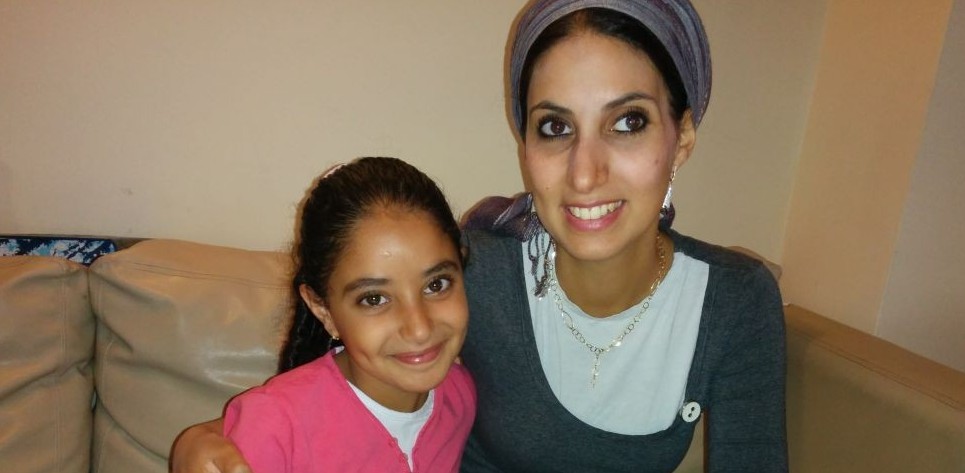
“I was standing outside the door of the doctor’s office when the missile hit. I lost consciousness immediately. When I came to, I couldn’t hear; I couldn’t see. Darkness and dust engulfed me. I groped for Tair with my burnt hand. Blood was everywhere. I started to scream for help.” Avital reels off the memory with such ease that I suspect she has replayed it a hundred times. A beautiful, slim woman with a flawless complexion, Avital’s dark eyes exude warmth and serenity. We are sitting in the lobby of the Bali Hotel perched high above the shimmering Kinneret, where Avital and her family are part of a group of victims of terror from Southern Israel enjoying a much-needed retreat sponsored by OneFamily, Israel’s leading national organization dedicated to the rehabilitation of victims of terror attacks and their families.
Missiles from Gaza began to rain on Ashkelon, a city of 120,000 people, in July 2006. At the time of the attack on the Hutzot Mall, the alarm meant to warn residents of incoming missiles wasn’t working. The IDF had disconnected the system because five false alarms the previous month had led to panic. Grad rockets (most likely manufactured in Iran) contain an especially large quantity of explosives in their warhead (18 kg, about 40 lbs) and have a fragmentation effect that causes extensive damage. So it isn’t surprising that ninety people were injured in the mall attack.
“Within less than a minute, Magen David Adom paramedics arrived and Tair was rushed to the nearby Barzilai Medical Center,” Avital continues. But it took longer to evacuate Avital. “I didn’t feel any pain despite the burns and injuries; I just longed to be on a stretcher,” recalls Avital. “My body felt heavy, lifeless, dead. I wanted to fall asleep, but people kept slapping my face to keep me awake. Months later, I learned that when I arrived at the hospital, I was classed as badly wounded and Tair as critically wounded.” Avital looks tenderly at Tair who is sitting beside us. When the medical team realized that both Avital and Tair had suffered head injuries, they were immediately flown to Sheba Medical Center, Tel Hashomer, for treatment. “I’ll never forget the panic on the nurse’s face when she noticed blood oozing from my ear,” says Avital.
Back at home, Avital’s mother got a call from an aunt in Netanya. “Putting the puzzle pieces together, they realized it was likely that I had been injured.” Prayers helped: my husband was taken to all the rabbis to get their blessing.
Rock-Hard Faith
Doctor Daniel Simon, Head of the Trauma Center at the Sheba Medical Center, had just completed his shift when he heard of the attack in Ahskelon. When he heard that no patients would be flown to the hospital, he headed home. He had just driven into his parking lot when he received an urgent call summoning him back. He was part of the team of surgeons that worked on Avital for thirteen hours of surgery. “When I surfaced from the anesthesia, I was surrounded by doctors, each one waiting to see the results of his work,” Avital recalls with a thin smile. “They told me that it was a miracle I had survived and that the bleeding in my brain had somehow stopped without intervention. I instinctively replied Baruch Hashem. My reply incensed one of the doctors. ‘Who put you here in the first place?’ he snapped.” While the rest of the medical team tried to hush the irate doctor, Avital replied, “Hashem is allowed to say ‘no.’ He’s allowed to give a potch.”
When I hesitatingly question the source of her rock-steady faith, Avital looks surprised. “I wasn’t a child,” she said. “I had had plenty of time to strengthen my beliefs.” I probe deeper, asking if perhaps she had been even momentarily angry with Hashem. “Not at all,” she replies. “When you don’t have anyone else to turn to…that’s when you’re tied to Hashem the closest.”
The Long Road To Recovery
Two weeks after the attack, a team of surgeons explained to Avital how they were going to repair her crushed eye socket. “We’ll cut across your scalp, pull down the skin, and then insert a platinum plate and screws,” they said. “In the end, no one will be able to tell what you’ve been through.” Of course, everyone made sure that Avital wouldn’t see herself. But one day, as she was being made to sit up to exercise her lungs, she caught sight of herself in a mirror. “My shaven head was double its normal size and the skin was stapled in place,” she recalls as she shares the hardest part of her recovery. “Every time I saw myself, I got a shock. It was harder than relearning how to sit and walk.”
Avital’s facial injuries were numerous: her jaw remained stubbornly locked and had to be slowly forced open. She lost much of the hearing in her left ear. She is blind in her left eye. “I have to undergo a third surgery to restore some of my hearing and also surgery to tighten the muscles in my blind eye to stop it from wandering. But you know how these things go…you push them off,” she says.
Avital’s body was also injured. “My hand remained open and it took hours of physiotherapy to force the muscles to stretch so that my fingers could curl towards my palm,” she says. She also underwent numerous grafts to rebuild her left thigh where shrapnel had blown away part of the flesh.
Although the large pieces of shrapnel were removed, smaller pieces are still embedded. “Sometimes when I put pressure on them, they hurt—like an enormous splinter. I have pieces in my neck and arm that play up periodically,” she says matter-of-factly. “I had plenty of visitors when I was in hospital, she adds, “including an American teenage tourist who strummed her guitar for me. “But it was OneFamily that was always there for me to encourage me with their caring.”
Moving On
Three years after the attack, Avital returned to teaching part-time. This year, she began to work full-time. “When I was in hospital, I saw people who were much worse off than me: they had lost limbs, some of them were living on medication to control their PTSD symptoms. I’ve never stopped thanking Hashem for His kindness to me. You see, you need a healthy soul to raise children,” says the proud mother of four.
What Happened to Tair?
A piece of shrapnel completely removed a section of the bone of Tair’s lower leg. In an effort to encourage the bone to regenerate, for the next two years, her leg was encased in plaster from the hip down. “It was heavy to carry around,” Tair says, shuffling the pack of cards she’s holding. Today, her left foot is more than a size smaller than the right one, and although she too has shrapnel pieces throughout her body, they don’t hurt her.
Lightly, Heavily or Critically Injured
According to Professor Shmuel Shapira, Deputy Director General of Hadassah University Hospital, “lightly injured” generally means that there is no danger to life or to any organ of the patient’s body (aish.com). That means that a terror victim who suffers fractured limbs, burns and/or shrapnel injuries that do not bleed all over the legs, arms, and face would be categorized as “lightly injured.” These physical wounds may require weeks of hospitalization, repeated surgeries, months of rehabilitation and frequent visits to the outpatient clinic for a year or longer. The psychological trauma of the light injuries may be even more devastating, leading in the worst cases to chronic unemployment, divorce, and sometimes suicide. Seems that the term “lightly injured” is a misnomer! Going back to Avital…she was heavily wounded.

